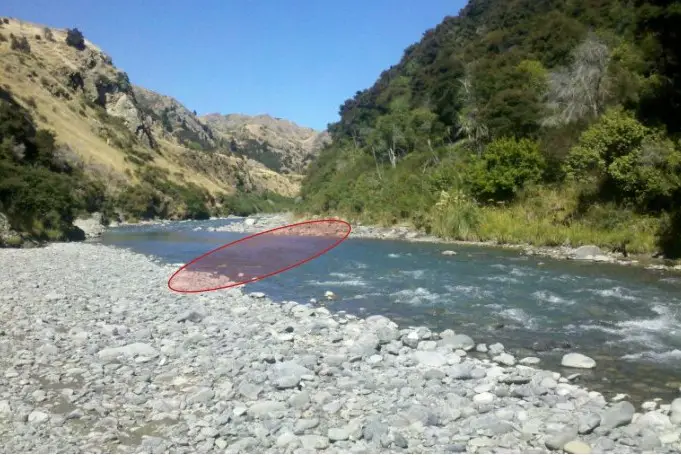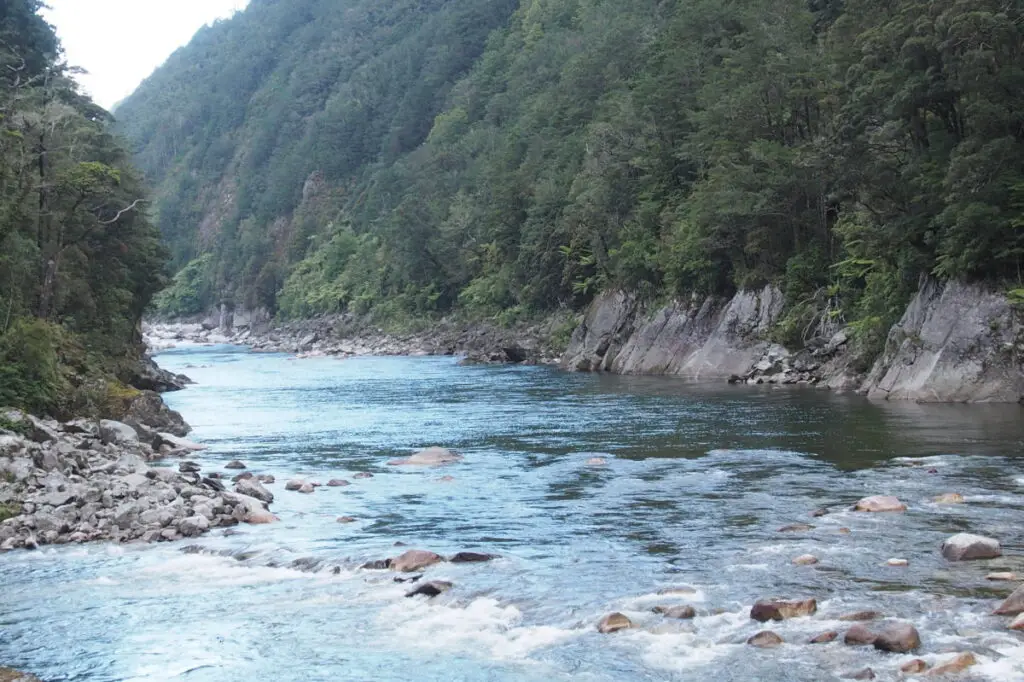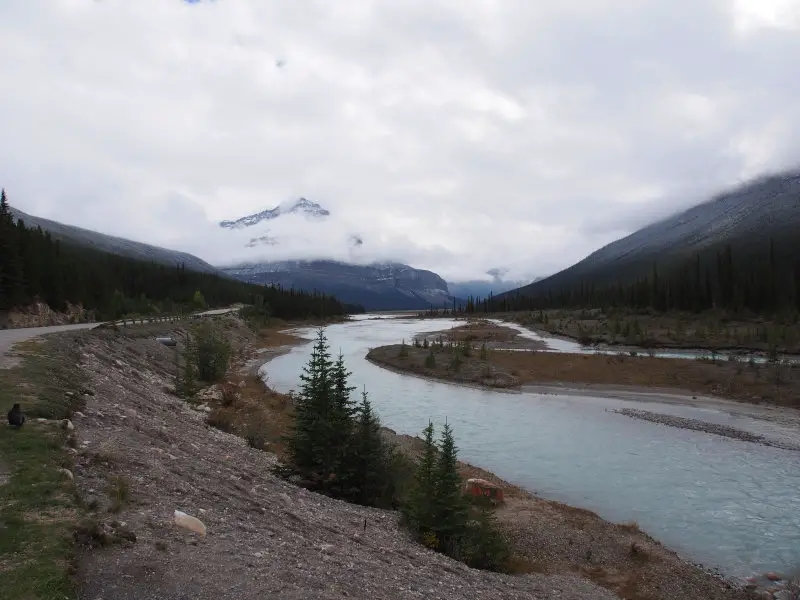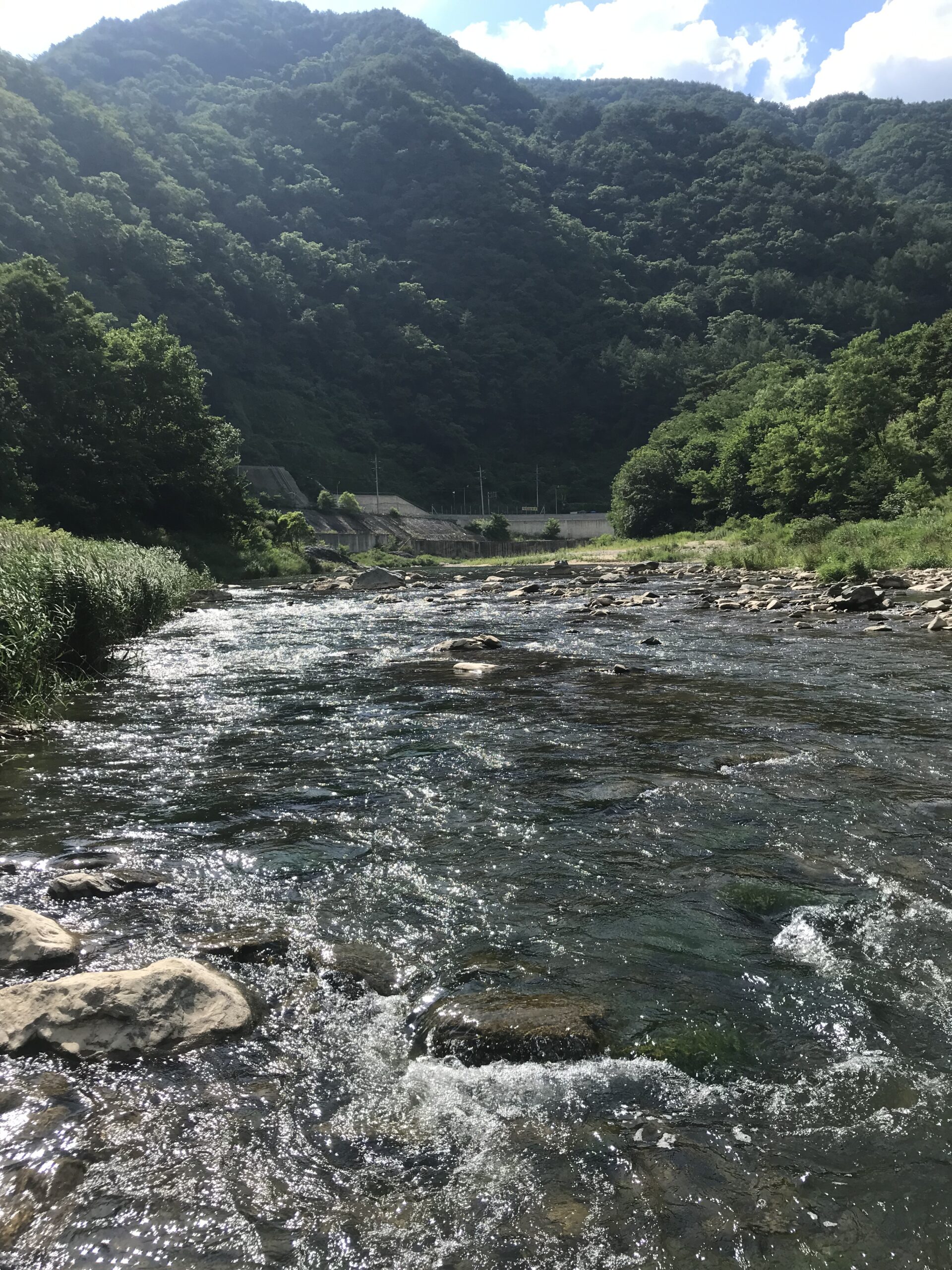As trout fishermen are the true river crossing experts. A hiker might do one or two crossings a trip, while us fishermen can easily cross a dozen times in an hour.
I have completed thousands of river crossing’s in my life, and I am privately proud to say I have never lost my footing or gone tumbling downstream. Like anything in life, the more rivers you cross the better you become at it and the faster it becomes.
With experience, it also becomes obvious much sooner what is fordable, and what is not. If it is too deep, or too swift. Best to look for another crossing.
River crossings can be challenging, and if not approached with caution and a little bit of care they can actually be dangerous. I have seen several of my fishing companions lose their footing and end up in the drink. It only takes a second, and in the colder months, it can ruin a day’s fishing.
Every year fishermen, hikers, and hunters drown when river crossings go wrong. So to fish in the backcountry, river crossing is an essential skill to become competent in.
Important considerations when wading
Consider water depth and swiftness before crossing

Where to cross when wading
Know how to swim, or wear floatation.
If you can not swim, I advise staying away from deeper crossings or wearing some sort of personal floatation.
If you do get knocked over by the current, and are unable to regain your footing. It is best to position your body to float down the rapid feet first (better for your feet to hit a rock than your head). This position also provides good visibility downstream to try and avoid obstacles and the worst of the waves.
Bend your knees slightly and keep your feet on the surface to avoid them from being hit or caught between rocks. Bent knees help to absorb any impacts. Do not try and stand while in the white water, but let the current carry you to deeper water where it is safer to try and swim towards the shore.
If you are starting to struggle, it is significantly easier to swim and maneuver when not holding onto a fishing rod. So be prepared to abandon your rod. You can always try and retrieve later.
Rapids and faster ripples might look scary, but most are actually quite swimmable if you do not panic. I have swum down many just for fun (although never when weighed down by a vest and fly rod)
For more advice on how to swim down rivers, read my article here.
Staying fit, makes wading safer as we age
As we get older, our strength and balance deteriorate. Keeping in sharp helps.
Core strength provides balance, when we lose it the risk of falling increases. This is even more apparent when trying to wade across a swiftly flowing river.
Exercise helps to postpone and even reverse the loss of strength. While good core strength will not prevent slipping, it will greatly reduce the likelihood of a slip becoming a fall.
As a naturally uncoordinated person, I know I would have fallen in a lot more often if I hadn’t taken up kayak racing in my late twenties. Being forced to maintain my balance in a 16-inch kayak has improved my balance everywhere in life.
I’m not suggesting that everyone should paddle a racing kayak, but staying or getting fit is a great way to maintain balance as we age.

Always have a plan to get back – river levels can change rapidly during the day
If you are fishing upstream, always keep in mind you have to cross back at the end of the day. Some crossings are straightforward in one direction, but less so in the opposite.
It is also important to note that river levels can rise and fall quite significantly throughout the day. A shallow crossing in the morning can easily be a foot or two deeper in the afternoon when snow in the headwaters starts to melt.
Likewise, a storm in the mountains can turn a trickle into a torrent. Always keep an eye on the weather.

How to wade safely and avoid slipping over
Out trout fishing, I have noticed that some people seem to slip over, and fall into the river more often than others. Some of my mates go for involuntary swims several times per season. The record I have seen is three falls in one day.
Spend enough time fishing, slipper over or falling is a certainty. While there is no way to completely remove the risk of falling, there are ways to greatly reduce the chances of it happening.
I have been trout fishing for years, and while I have swum a few times. I am proud to say I have never fallen into a river while wading. I have floated off the bottom when attempting too deep crossings and misjudged the depth when jumping in but these are different issues.
I do fall occasionally while hiking and more often than I care to admit while running, but never when wading simply because I take my time and understand foot placements and the best paths to take while in the water.
So what are the secrets to avoid slipping in? I am going to start with the one I never read elsewhere.
2) Slow down and relax
When wading move slowly and in a controlled fashion. This minimizes the risk of falling. I often take the time to look ahead, to check the depth and speed of the water, and to know in advance where I am going to be putting my feet.
Wading is slower than walking. Rushing will only spook trout and increase the risk of falling in.
River crossings can be difficult, it is not something most people are familiar with so take plenty of time to firmly plant each foot between steps. There are plenty of chances to slip, so the crossing speeds need to match.
Going slow gives plenty of time to test and then fully secure foot placements. I rarely take my next step until I am fully confident in my first. Sometimes, when conditions get a bit challenging, I will even pause and take a short break between steps.
Before entering, pause and observe
Speed is the enemy when wading. Trying to wade quickly is not only tiring, but it can also easily lead to mistakes.
Before entering the water, take some time to observe the current conditions. Look for safe entry and exit locations. Before I start crossing, I always know where I am going to enter.
When attempting riskier crossings, I also know where I can get out if I get washed down the rapid. If there are no safe exit locations, I do not take any risks.
3) Watch where you are going.
Simply watch the bottom, and plan ahead.
Try and avoid paths that cross over large slippery boulders.
Avoid entering guts, or areas of faster flow.
When choosing a path, I look for patches of sand, gravel, and smaller stones. Preferably with slower or still water.
I prefer deep but slow, over shallow but fast. I much prefer to stand on gravel and sand than rocks or boulders.
4) Step between boulders, not on them.
Stepping on boulders is just asking for trouble. It is nearly always better to search for secure footholds between the stones and boulders rather than on them. Gravel and sand offer a much better grip than a slimy rock.
If you must place your foot on a rock, double, if not triple check the placement before committing to your next step.
When footholds are small or limited, I find it is nearly always more secure to place your weight on the arch of your foot rather than the ball or heel. The curve of the arch seems to contour better to the roundness of the rocks allowing for more grip.
5)Shuffle rather than lift your feet.
When the bottom is slippery or uneven, I do not take complete steps. But I shuffle along maintaining contact with the bottom at all times. Try and slide and shuffle your feet across the bottom. Even during the step, try and maintain some contact with the bottom.
I feel the contour and the surface of the riverbed with every movement. I can feel if a rock is slippery or off balance before committing my weight to it. I only place my foot down solidly when I know it will be a firm footing.
Likewise, take shorter, rather than longer steps. Keep your feet close together.
Importantly, never become cross-legged, or over-commit by attempting a long stride.
6) Never trust sloping rocks.
A flat rock is usually safe to stand on, a sloping boulder deserves more respect. A thousand times more respect if it is covered with slime or a thin layer of ice. Unless it is bone dry, I gingerly test the grip of large rocks before committing my weight to them.
Even a gentle slope can lead to a swim. One icy winter morning, I had just started a hike and wandered over to a stream to try and spot some trout.
I climbed on a large flat rock and had barely taken my second step before I slammed down onto my back, and bounced into the icy cold pond. Luckily, the cold chilled any pain. The culprit was a thin layer of ice. It looked dry, so I trusted it and got rewarded with a winter swim. It can happen so quickly.
7) Know when to turn around.
Sometimes, a section of the river is simply too difficult to cross or wade through. Stop, observe and reconsider your options. There is no shame in turning back or attempting another path.
Some sections of rivers are simply too dangerous to cross.
If you have bitten off more than you can chew, and the crossing has gotten too deep or swift. It is generally best to back out slowly in reverse rather than attempt to turn and face the full force of the current.
It might only take a few seconds to turn, but it is more than enough time to get knocked off your feet.
8) Stand side on to the current.
I suspect this one will come naturally to most people when they start to wade. River currents can be strong, and they want to push us over.
For this reason, it is much easier to wade side onto the current. This minimizes the surface area facing the current head reducing its strength.
9) Go with the flow
Most river crossing advice suggests angling slightly downstream when crossing. It is much easier to walk with the flow rather than against or parallel to it.
This is one area, where I personally do not entirely agree with the common advice. When the current is strong, I find it can push me downstream too quickly. I find fighting against the current gives me the time to place secure footholds. Yes it takes longer and is physically more tiring but I personally find it is a much more secure way to cross.
Useful gear when wading
Polarized sunglasses
A pair of polarized sunglasses make it significantly easier to see the bottom. I consider them to be the most important piece of kit when it comes to safely wading. Seeing the bottom clearing, and more in advance aids greatly in proper foot placement and route.
Wading staff
I never carry or use a wading staff. But I understand why some people do. They assist greatly in stability by providing a third point of contact. Three legs are more stable than one.
With the assistance of a wading stick, you should always have two points of contact rather than just one. Just like with rock climbing, the more points of contact, the more secure and safer you are.
Wading boots
Proper footwear designed for wading makes a massive difference. The difference a good pair of felted or studded rubber wading soles make is like night and day.
While it is possible to cross in almost any footwear, it is significantly safer and faster when there is sufficient grip. A few weeks back, I tested out wading in neoprene boots, and it easily took three times as long to make a crossing while wearing them than proper wading footwear.
I have one fishing location which is extremely slippery. Despite my warnings, everyone I take there, who are not wearing suitable footwear will slip over at least once. Anyway, a mate of mine always wanted to fish there, so I took him along. He was convinced that his keen sandals will have enough grip. He slipped over three times that first trip.
The following trip he purchased a pair of felt soles wading boots and his footing is now more stable than my studded rubber boots. Proper footwear does make a massive difference
Always with a wading belt
If you are wearing waders, always wear them with a properly fitted wading belt. A tight wading belt helps to keep water out of the top of the waders.
While it is generally possible to swim in waders, under certain circumstances they can fill with water and drag the wearer down. A wading belt all but prevents that from occurring.
Summary.
To summarize, walk slowly and observe the river ahead. If the riverbed is uneven, try to maximize contact by shuffling more than walking.

